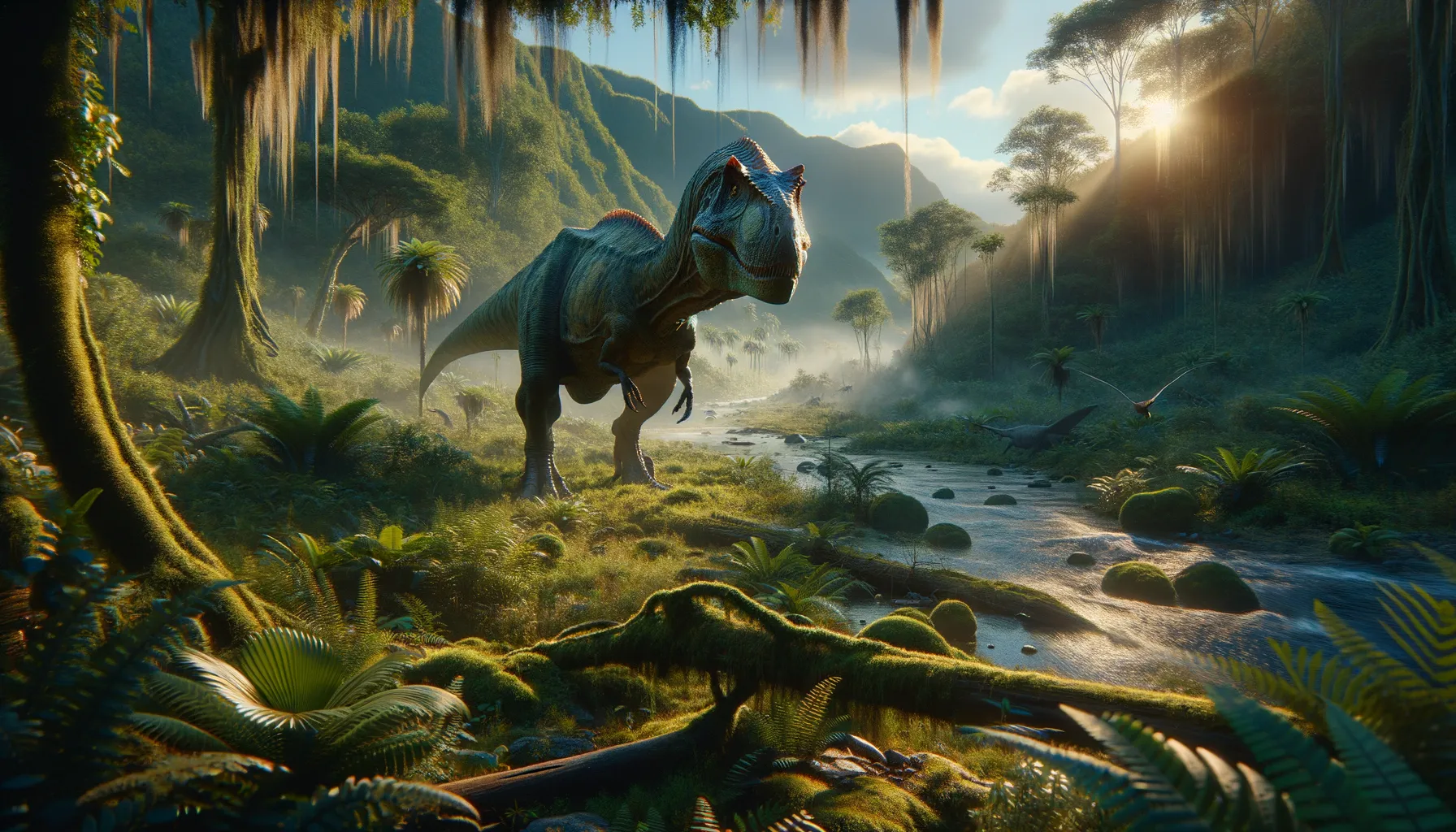
Sauraechinodon
Explore the ancient secrets of the past
Period
Unknown
Length
Information not available.
Height
Information not available.
Weight
Information not available.
Sauraechinodon is not recognized as a scientifically valid dinosaur genus. There might be a discrepancy in the name or misidentification. Generally, dinosaurs were diverse and adapted to a range of ecological niches, from fast runners to massive herbivores. They existed for millions of years and left behind a rich fossil record that continues to intrigue scientists. To explore dinosaurs is to uncover the mysteries of the ancient past and understand the evolution of life on Earth.
Diet
Information about Sauraechinodon's diet is not available due to its unrecognized status. However, dinosaur diets varied widely, from meat-eaters to plant-eaters, to omnivores who consumed a mixture of both.
Hunting
Hunting behavior cannot be detailed for Sauraechinodon as it is not a recognized dinosaur. Nevertheless, known theropods displayed diverse hunting strategies, ranging from pack hunting to solitary ambushing.
Environmental challenges
Without specific information on Sauraechinodon, it's speculative to consider its environmental challenges. Dinosaurs faced various conditions, from changing climates to evolving flora and fauna. These factors often dictated their adaptive strategies and survival.
Speed
Information not available.
Lifespan
Information not available.
First discovery
Information not available.
Fun Facts
- Sauraechinodon was a herbivorous dinosaur that lived during the late Jurassic period.
- It is known for its unique set of leaf-shaped teeth, which were perfect for grinding plant material.
- Despite its large size, Sauraechinodon was a gentle giant that roamed forests in what is now Europe.
- Fossils of Sauraechinodon have helped scientists understand the evolution of plant-eating dinosaurs.
- Its name, 'Sauraechinodon', translates to 'lizard spine tooth', inspired by its distinctive dental structure.
- This dinosaur was part of a group known as ornithopods, which were known for their strong hind legs.
- Sauraechinodon's fossils were first discovered in the mid-20th century, sparking significant interest in paleontological circles.
Growth and Development
Data on Sauraechinodon's growth and development is unavailable. Generally, dinosaurs showed wide-ranging developmental patterns, from rapid growth phases in predators to more gradual growth in giant herbivores, reflecting their ecological roles.
Habitat
The habitat of Sauraechinodon is unknown, as the creature is not scientifically validated. Dinosaurs inhabited diverse environments, including forests, deserts, and coastal regions, each supporting different ecological communities.
Interaction with other species
Interactions for Sauraechinodon cannot be examined accurately. Dinosaurs interacted with various species, sometimes through predator-prey relationships, symbiosis with plants, or competing with contemporaneous fauna.
Natural lifespan
Lifespan specifics for Sauraechinodon are unavailable due to its questionable status.
Reproduction
Reproductive habits of Sauraechinodon are unknown. Dinosaurs, like modern birds and reptiles, typically laid eggs and had varied levels of parental care, dependent on species.
Social behaviour
Social behavior specifics for Sauraechinodon are not determinable. While some dinosaurs likely lived solitary lives, others, like the hadrosaurs, may have moved in herds for protection and social interaction.
Fossil locations
Fossil locations for Sauraechinodon cannot be confirmed as the name does not match any scientifically recognized genus. Generally, fossils are found worldwide, in locations like the American West, the Gobi Desert, and Argentina.
